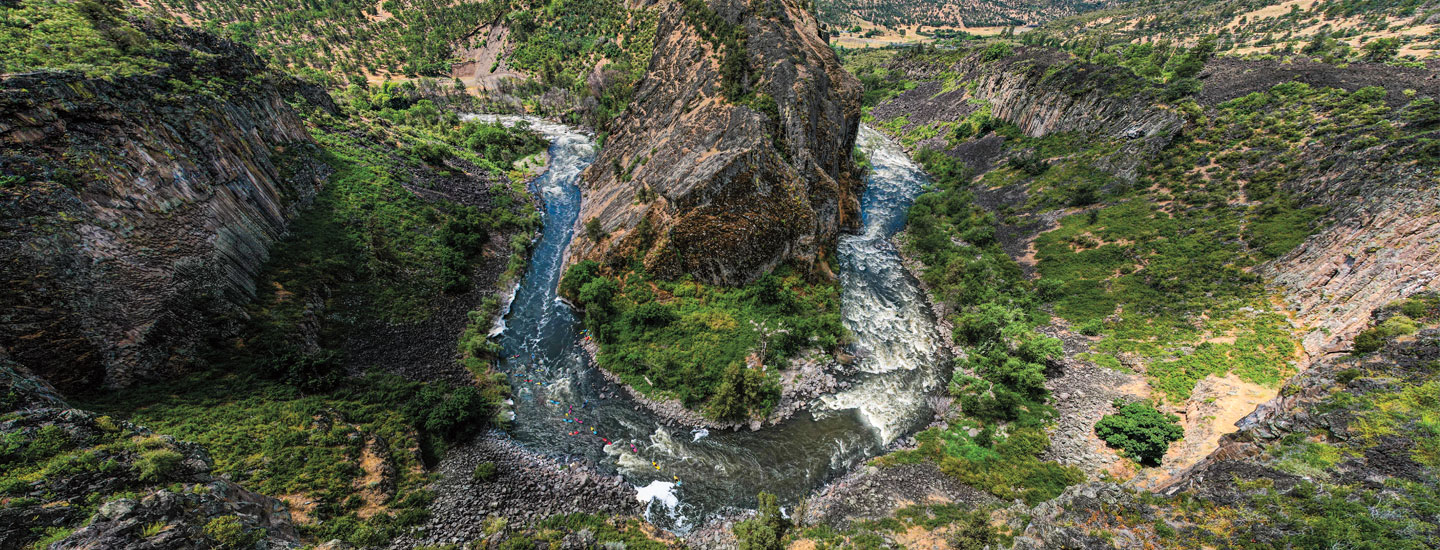Ríos to Rivers, a group that works with Indigenous youth, wanted to help local teens kayak the Klamath to celebrate the removal of the dams. In 2022, the group started teaching the teens the skills they would need.
Coley, 14, wasn’t interested at first. “I thought I had better things to do,” she says. But after her family convinced her to get involved, she realized how powerful it was to connect with other Indigenous teens and with the river.
During their 30-day journey down the Klamath, the teens shared stories about their families and their Tribes while they paddled through their ancestral waters. At night, they roasted marshmallows around campfires. “We’d all just have fun and chat around, do tricks off the kayaks,” Coley says. “That was probably my favorite part.”
Taeliah Eggsman is a 16-year-old from Chiloquin, Oregon, and a member of the Klamath and Modoc Tribes. During the trip, she came to appreciate the parts of the Klamath that are different from where she grew up. And she got to show off her ancestral homeland to the other teens. “The water is really important to me, my Tribe, my family,” she says.

